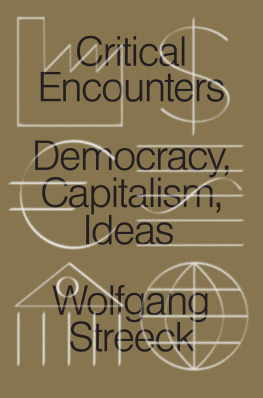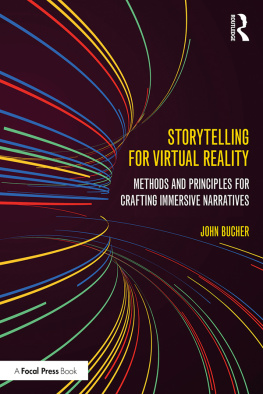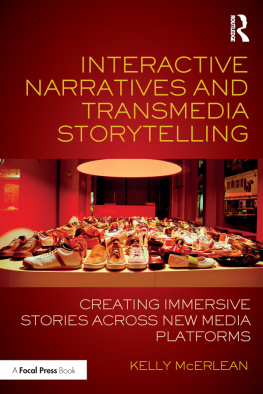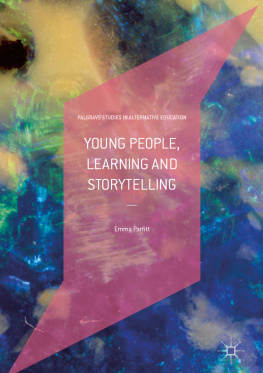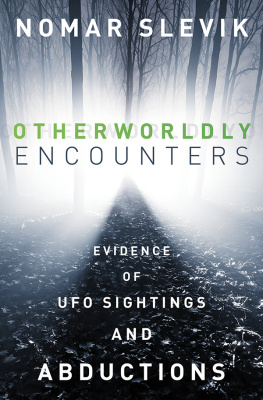Critical Encounters with Immersive Storytelling
A uniquely interdisciplinary look at storytelling in digital, analogue, and hybridised contexts, this book traces different ways stories are experienced in our contemporary mediascape. It uses an engaging range of current examples to explore interactive and immersive narratives.
Critical Encounters with Immersive Storytelling considers exciting new forms of storytelling that are emerging in contemporary popular culture. Here, immersion is being facilitated in a variety of ways and in a multitude of contexts, from 3D cinema to street games, from immersive theatre plays to built environments such as theme parks, as well as in a multitude of digital formats. The book explores diverse modes and practices of immersive storytelling, discussing what is gained and lost in each of these genres. Building on notions of experience and immersion, it suggests a framework within which we might begin to understand the quality of being immersed. It also explores the practical and ethical aspects of this exciting and evolving terrain.
This accessible and lively study will be of great interest to students and researchers of media studies, digital culture, games studies, extended reality, experience design, and storytelling.
Dr. Alke Grppel-Wegener is an Associate Professor of Creative Academic Practice at Staffordshire University where she teaches as part of the animation team. She is interested in the retelling and regenreing of stories in all forms. As a National Teaching Fellow, she retells hidden academic practice in visual metaphors (some collected in Writing Essays by Pictures, Innovative Libraries 2016), blogging about her work at www.tactileacademia.com. Her research focuses on the design of experiences, in particular within theme parks.
Dr. Jenny Kidd is a Senior Lecturer in the School of Journalism, Media and Culture at Cardiff University. Jenny researches across the fields of digital media and digital cultural heritage studies, often in collaboration with partners in the cultural sector. She is the author of Museums in the New Mediascape: Transmedia, Participation, Ethics (Routledge 2014) and Representation (Routledge 2015). She has published widely on participatory media, transmedia, and immersive heritage. Jenny has been a core project partner on a number of immersive storytelling projects, including With New Eyes I See (2014) and Traces/Olion (2016). www.jennykidd.org
First published 2019
by Routledge
52 Vanderbilt Avenue, New York, NY 10017
and by Routledge
2 Park Square, Milton Park, Abingdon, Oxon, OX14 4RN
Routledge is an imprint of the Taylor & Francis Group, an informa business
2019 Taylor & Francis
The right of Alke Grppel-Wegener and Jenny Kidd to be identified as authors of this work has been asserted by them in accordance with sections 77 and 78 of the Copyright, Designs and Patents Act 1988.
All rights reserved. No part of this book may be reprinted or reproduced or utilised in any form or by any electronic, mechanical, or other means, now known or hereafter invented, including photocopying and recording, or in any information storage or retrieval system, without permission in writing from the publishers.
Trademark notice: Product or corporate names may be trademarks or registered trademarks, and are used only for identification and explanation without intent to infringe.
Library of Congress Cataloging-in-Publication Data
A catalog record for this title has been requested
ISBN: 978-0-367-15162-1 (hbk)
ISBN: 978-0-429-05540-9 (ebk)
Typeset in Times New Roman
by codeMantra
Doing something immersive is increasingly seen as a way of maintaining relevance and securing visibility in a crowded and complex content landscape. As this book will demonstrate, the quality of being immersed is facilitated in diverse ways and in a multitude of contexts. While the term has more recently been used to describe developments in the fields of Virtual Reality (VR), Augmented Reality (AR), and mixed reality, there are many analogue experiences that can be considered immersive: street games, interactive theatre, and built environments such as theme parks and historic sites, for example. Indeed, many forms of immersive storytelling collapse the binary between physical and digital contexts, allowing holistic storyworlds to be constructed and inhabited. Immersive storytelling is exciting and evolving terrain, raising practical and ethical questions as we investigate here.
This book uses a range of current examples to explore different forms of storytelling. It understands much compelling and creative contemporary story-making to be collaborative, transmedial, multimodal, experiential, performative, and (sometimes) ungovernable. Focusing on diverse practices, the book traces different ways stories are being experienced in our contemporary mediascape, discussing what is gained and lost in different genres of immersive storytelling. It unpacks complex terms to suggest a framework within which we begin to understand the quality and promise of immersion. We critically analyse the immersive turn within its broadest creative, cultural, technological, and social contexts, whilst recognising it as an increasingly economic and political project as well. Examples are drawn internationally, reflecting the fact that immersive media are the subject of transnational popular and scholarly attention.
We (the authors) have both been researching at the intersection of immersion and storytelling for many years, exploring diverse connections between narrative, genre, environments, and experience. Our joint perspective makes this book a unique resource; it is both critically and practically attuned, and offers ways into research design for immersive contexts. Such research raises complex methodological considerations that are often rendered invisible in the reporting of case studies; yet, this book acknowledges and confronts them head on, making our reflexivity visible, and itself a productive resource.
This introductory chapter considers some key themes, concepts, and approaches that we return to throughout the book. It uses existing scholarship to explore what we mean when we talk about immersion and storytelling, noting that neither concept is bounded or stable. It examines why the immersive is such a seductive concept in our present cultural, social, economic, and political moment(s), and thus why its study is important. It introduces key concepts that will underpin analyses in the book and begins to problematise meaningful distinctions between analogue/digital, physical/virtual, and online/offline.
Given the complexity of immersive storytelling as a research subject, we now offer four different approaches to sketch out where this book sits the analogy, the experience, the history, and the definition before concluding with an overview of the books structure.
The Analogy: Liquid Metaphors and the Glass-Bottomed Boat
We as researchers come to this writing project from not quite opposite, but certainly different, directions and perspectives. Alkes background is in theatre design and she has had a fascination with how theme parks work ever since having to write a paper on English Garden Architecture as an undergraduate student. Subsequently, she investigated what museums can learn from theme park design, and became interested in how story experiences can be created without performers. Jennys background as a web developer and (then) digital storytelling researcher later led her to research within cultural heritage contexts, with a particular interest in their performative and digital dimensions. In recent years, that has included action research in the build, test, and evaluation stages of immersive projects. We met more than a decade ago at an event put on by a museum theatre company we were both working with at the time, albeit on different projects. This event had on the surface all the hallmarks of an immersive experience: a themed environment, a (fictional) backstory, and performers that were interacting with the audience as characters. But neither of us felt fully immersed, and at times the experience was downright uncomfortable. We have had many conversations since that time, attempting to understand what was happening.




